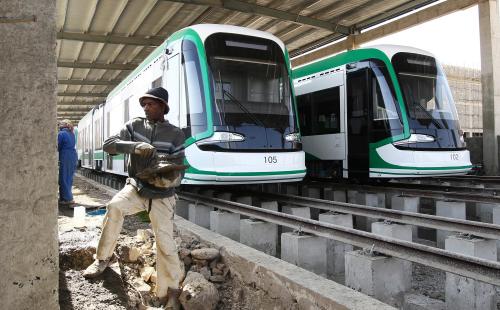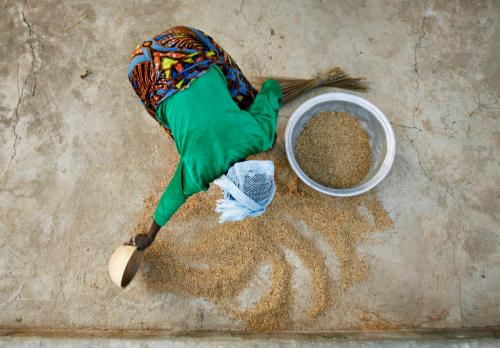Ethiopia has experienced rapid economic growth since 2005, with gross domestic product (GDP) growing at an average rate of 10.5 per cent per annum in real terms for the period between 2004–05 and 2012–13 (Ministry of Finance and Economic Development, MoFED 2013). This makes Ethiopia one of the fastest growing countries in the world. The rapid economic growth has a multifaceted effect on a number of social, economic, and political domains. Considering 2015 is the year the first Growth and Transformation Plan (GTP)—the country’s comprehensive five-year development plan with targets aligned to the aim of achieving middle-income status by the mid-2020s—ends, it is a good time to explore the pattern of economic growth in Ethiopia and the relevant growth opportunities and challenges.
Available evidence suggests that economic growth in Ethiopia has been accompanied by signs of a structural shift away from traditional and primary sectors and towards secondary and tertiary ones. For instance, the pace of output growth has been decreasing in agriculture whereas growth rates of industrial and service sectors have been increasing. As a result, the share of agriculture in GDP is now comparable to that of the service sector—a significant change from a couple of decades ago.
Both economic growth and structural shifts have important implications for poverty reduction and income distribution. Labour market outcomes are a major potential avenue through which these influences take place. The high rate of public investment in infrastructure has generated growth in construction and related industries and triggered growth in other sectors through linkage effects. There are three major channels through which the process is believed to have influenced income distribution in the country. First, investment on infrastructure and buildings led to higher employment of urban youth and rural migrants in construction and allied sub-sectors. Second, partly caused by this expansion of employment, the demand for goods and services increased. This is particularly significant to the agricultural sector, thereby leading to terms of trade improvements in favour of the sector. Policy responses to these pressures aimed to raise productivity in agriculture and include the expansion of the agricultural extension system. Structural change formed the third channel.
As a consequence of the changes noted above, the role of agriculture has decreased continuously in the face of an increasing role of the service and construction sectors, and this has led to reallocation of jobs and labour from the low-productive agriculture sector to the high-productive service sector. Historical evidence shows that this type of labour reallocation is vital for more secure employment and higher living standards. The nation’s effort following these changes is to diversify the shift of economic activities towards the manufacturing sector to ensure more durable jobs and sustainable growth. This is the focus of the second phase of the GTP that began in late 2015.
Another aspect of sectoral reallocations is their potential to engender more unequal outcomes. The possibility of this out-turn is not small since the jobs created in the service sector are, on average, relatively more knowledge-intensive and higher paying. The earnings gap between skilled and unskilled workers in Ethiopia can thus widen. This is obviously an empirical question. In this study, we, accordingly, attempt to collate and analyse the relevant evidence, such as within- and between-sector employment shifts, to ascertain whether economic growth and structural change in Ethiopia are pro-poor. Moreover, the study explores related social and economic changes that have affected employment of both skilled and unskilled workers in Ethiopia, including population growth and its demographic structure, the expansion of education, returns to education, and the role of the public sector and social protection programmes in employment.
The remainder of this paper is organized as follows. Section 2 discusses the pace and sources of economic growth in Ethiopia, which has been observed since the mid-1990s. Section 3 considers the status of structural transformation in Ethiopia. Demographic conditions and human capital development in the country are considered in Section 4, whereas Section 5 explores the effect of the economic growth on the labour market. The final section concludes.
Note: This paper is part of the African Lions project, which is a collaboration among United Nations University-World Institute for Development Economics Research (UNU-WIDER), the University of Cape Town’s Development Policy Research Unit (DPRU), and the Brookings Africa Growth Initiative and explores the key constraints facing six African economies as they attempt to maintain long-run economic growth and development trajectory.






